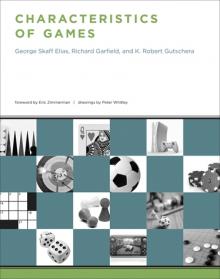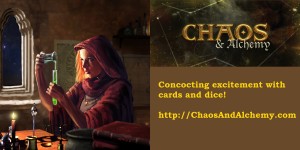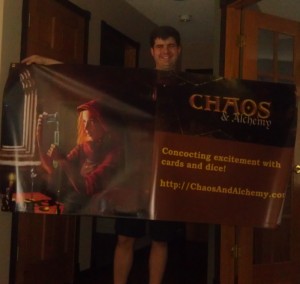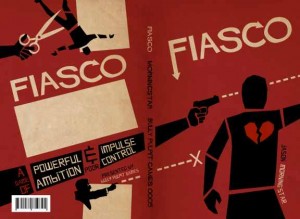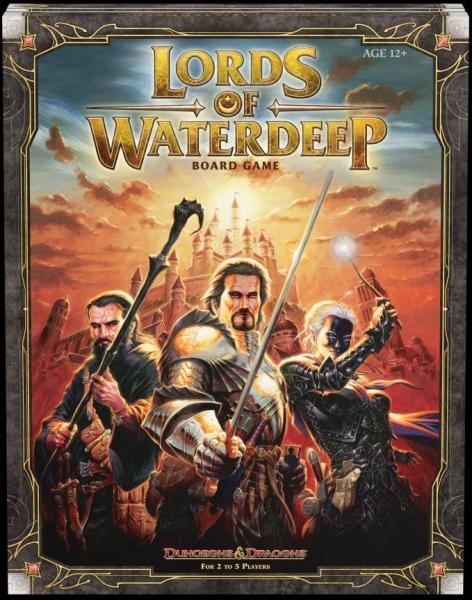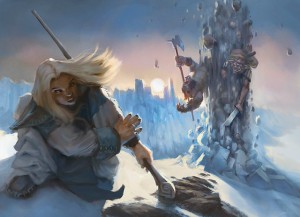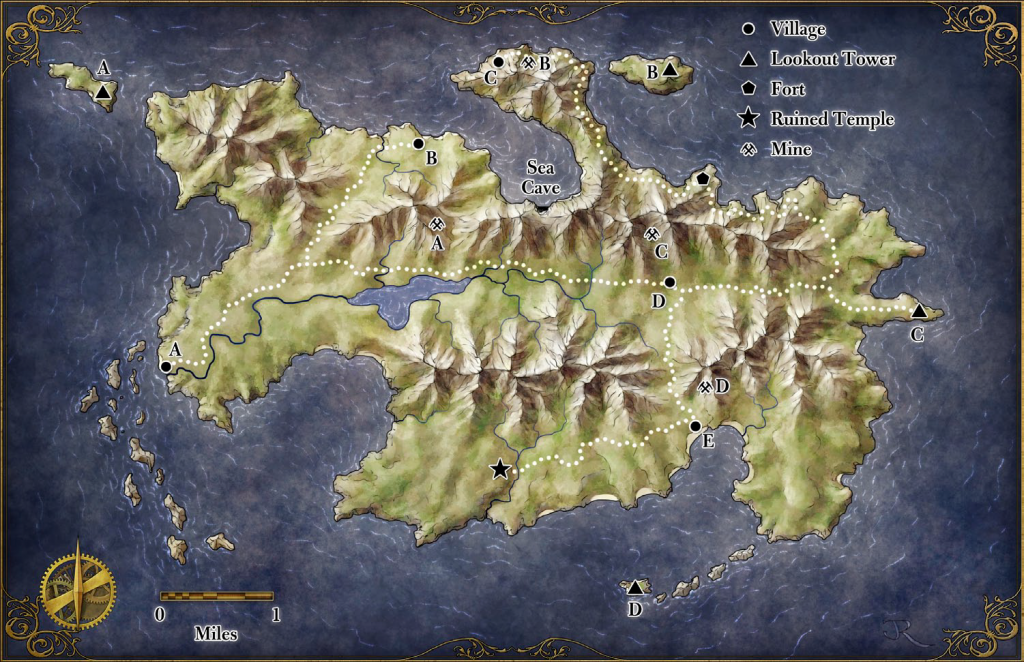The first time I ever backed a Kickstarter project was nearly two and a half years ago as of this writing – early in 2011. Today, I thought I’d take a look back at the first 10 projects I backed and note what made me want to back it, what level I backed at, and how it turned out. (Part 2 of this series is at this link.)
1. ZEITGEIST Adventure Path from EN World – April 2011
This was the first Kickstarter campaign I ever backed. EN World, where I was an active forum member at the time, was getting ready to publish their ZEITGEIST campaign. I was running their War of the Burning Sky campaign at the time for my online game, and I loved it. Furthermore, I had participated in a loose play-by-forum playtest of the first ZEITGEIST adventure run by its designer, Ryan Nock.
Why I backed it: I loved that play-by-forum taste of the campaign and I wanted to support it.
My pledge: All right, this is a little insane, and I’ve never done anything like this since. I actually ponied up a $500 pledge to participate in a game Ryan would be running at Gen Con 2011.
How it turned out: The campaign didn’t hit its funding goal. That’s probably a good thing for me, since I’ve run a grand total of one adventure in this campaign. I would have felt pretty dumb being out $500 on this in the end.
Interesting side note: EN World came back much later to run a Kickstarter for this adventure path, and I decided not to back it because I thought it was too expensive. Times change!
2. Dungeonmorph Dice – May 2011
Why I backed it: I thought the dice looked really cool, and there was an outside chance I might use them to put together a dungeon map on the fly someday.
My pledge: $20, for a set of five dice.
How it turned out: I eventually received my dice. They look cool. I don’t believe I’ve ever rolled them. Still, I feel fine about the experience.
3. Compact Heroes – June 2011
Why I backed it: I liked the concept of the game (an RPG based on a deck of cards – frankly, a little bit like the Pathfinder Adventure Card Game).
My pledge: $50 for two starter decks.
How it turned out: I received my decks, more or less on time as I recall. I’ll admit that I’ve never played the game. Sigh. On a brighter note, the designer, Rod Waibel, was really helpful when I was trying to figure out how best to print Chaos & Alchemy cards a year later.
4. Mutant Meeples – December 2011
Why I backed it: The game looked like a lot of fun – a cool twist on Ricochet Robots (which I had played years before but did not own). I’ll admit that the video was pretty slick, too.
My pledge: $60 for the game and its expansion
How it turned out: I believe that this holds the record for the longest delay between when the game was supposed to be delivered (February 2012) and when it was actually delivered (December 2012, if I remember right) so far. It’s a pretty cool game, but I’ve only played it once or twice.
Side note: I have no idea why I didn’t back anything between June and December of 2011.
5. Gaming Dice in Chocolate and Sugar – December 2011
Why I backed it: Come on, these are cool! D&D dice that you can eat; awesome. Also, the creator was a fellow Coloradan.
My pledge: $25 for a chocolate set and a sugar set of dice.
How it turned out: Delicious! There were some production delays, but I was very happy with the final product.
6. The Order of the Stick Reprint Drive – February 2012
Why I pledged: I love Order of the Stick, and I hadn’t been able to find a copy of War and XPs anywhere.
My pledge: $45 for a copy of War and XPs (I wanted to pledge $60 for a signed copy, but those went too fast)
How it turned out: Awesome! The book is great.
7. Monster Stock Art and Minis – March 2012
Why I pledged: At the time, I had recently put out my free D&D 4th Edition adventure trilogy The Staff of Suha, and I thought that I might want to have some monster art to use in case I published future adventures like that one. Also, the monster art could be useful for the online games I was running in MapTool.
My pledge: $140 for a license to use all of the art that came out of the project commercially.
How it turned out: Until I started putting this blog post together, there was no way I could have remembered that I spent $140 on this art. I’ve barely used any of it in my MapTool games (which I stopped running in mid-2012 when I moved on to board game design), and I haven’t published any new adventures. Quality art, but a waste of money on my end.
8. Admiral ‘o the High Seas – Naval Adventures from EN World
Why I pledged: Largely to support the ZEITGEIST campaign (see item 1 on this list). I didn’t care much about the naval combat rules themselves.
My pledge: $45 for a PDF of the new supplement and the right to name a character or location in an upcoming ZEITGEIST adventure.
How it turned out: I turned the abbreviation for Online Dungeon Master, ODM, into a word – Odiem – that EN World used as the name of a spooky island location in a ZEITGEIST adventure. Cool. I’m happy with the investment.
9. DoubleFine Adventure
Why I pledged: I’ll admit it; I jumped on the bandwagon. I mean sure, I enjoy this type of game, but I’m really not a big video gamer these days and I wouldn’t have signed on if it weren’t for the “Kickstarter phenomenon” part of this campaign.
My pledge: $15 for a copy of the game.
How it turned out: Well, the game isn’t done yet. I guess this is really the most-delayed project I’ve backed (Mutant Meeples, you’re off the hook). They’ve apparently been putting out videos about the process, but I haven’t bothered to look at any of them (I just don’t care). A waste of money for the most part, but only a $15 waste.
10. Prismatic Art Collection – May 2012
Why I pledged: Mainly because I wanted to support a project that Tracy Hurley and Daniel Solis care about (two people I respect greatly). Also because the art might be useful for any adventures I might release on my site (same rationale as for the Monster Stock Art project).
My pledge: $25 for a thank-you on their web site.
How it turned out: Some art has been released. I haven’t used any of it. But I helped Tracy and Daniel reach their goal, so I’m fine with that.
Scorecard for my first 10 projects:
- Number that were actually funded: 9/10
- Number that were eventually delivered: 8/9 (and I think that DoubleFine will eventually come through, too, making this 9/9)
- Number that I feel were ultimately worth it in retrospect: 6/9 (the three exceptions being Compact Heroes, Monster Stock Art and DoubleFine Adventure)
- Total money spent: $425
- Money spent on not-worth-it projects: $205 (sigh)
What’s next?
As of this writing, I’ve backed 49 total projects. I like the idea of going through them 10 at a time, so I’ll probably do 11-20 in the near future. (Edit: Here they are!)
What about you – how many Kickstarter projects have you backed, and how many have been worth it in retrospect?
Michael the OnlineDM

